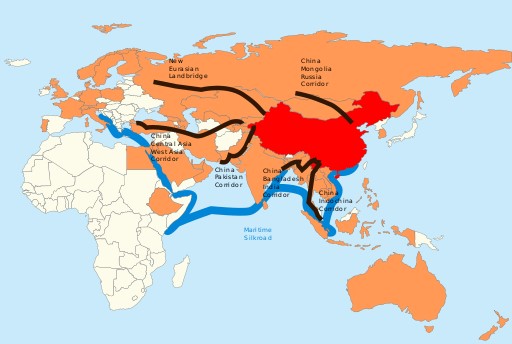The World Bank has finally released its long-delayed report analyzing Chinese investments in the ambitious One Belt One Road Initiative. It noted that Chinese investment in a string of infrastructure projects that connect China to the European, Asian, and African markets will be instrumental in uplifting poverty across all the regions it touches. The network of roads and bridges, ports, railways, and other infrastructure across half the world has the potential to pull 32 million people out of poverty and moderate poverty if all goes well.
The network of roads and other infrastructure will effectively tie the economies closer together. This will be a huge benefit to the trade potential between all these economies.
The case of landlocked central Asian economies is a pertinent example. Countries such as the Kyrgyz Republic, Azerbaijan, Tajikistan and Mongolia will be able to engage in world trade more easily. More trade means also means that these economies will open up for tourism and will bring much-needed economic prosperity to these landlocked countries. The China-Kyrgyzstan-Uzbekistan railroad will lead to the geographic reorientation of the area and will benefit the country their economies in a plethora of ways. Furthermore, the Central Asian region with its huge mining potential will attract investments from all over once the connecting network of infrastructure is laid down.
The OBOR investments that go through the South Asian region are another example of the economic benefits that the initiative offers to partner countries. The China-Pakistan Economic Corridor (CPEC) is a network of railways, roads, and other infrastructure projects that travel the length of China’s South Asian neighbor and end at Gwadar port in the south western corner of Pakistan. Pakistan has received investment of over $64 billion dollars in the form of infrastructure projects. This included the revamping of railway lines of the colonial era, construction of motorways and highways, as well as energy projects. As a result of these investments, the recipient country was able to connect its farthest and remotest areas to the rest of the country, add 10000 megawatts to its national grid, as well as develop a world-class deep water port. All these developments will go on to have a multiplier effect when it comes to the economic and developmental gains for Pakistan.
The World Bank also stressed upon the importance of reforms for best results.


